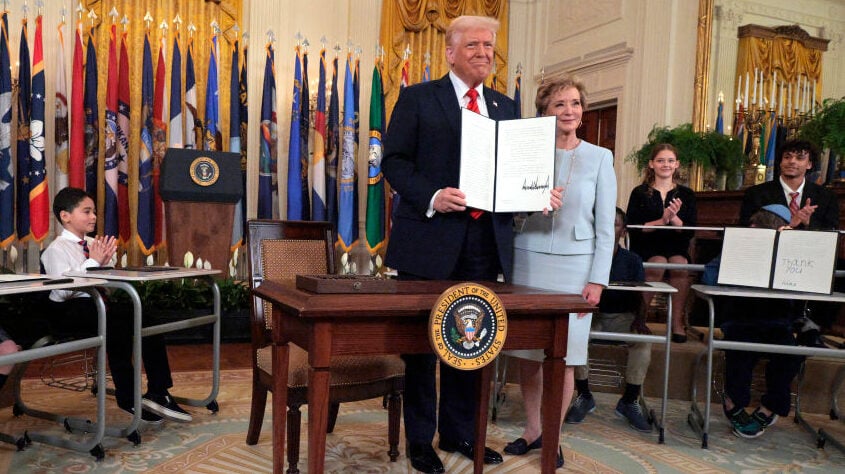Funding Cuts and Their Impact on Minority-Serving Institutions
In recent developments, the Trump administration made a controversial move that has drawn significant attention: diverting hundreds of millions of dollars from Minority-Serving Institutions (MSIs), which include predominantly Black institutions (PBIs), toward increasing funding for Historically Black Colleges and Universities (HBCUs). While the intention may appear beneficial for HBCUs, the real implications extend beyond the immediate benefits.
Understanding MSIs and PBIs
MSIs play a crucial role in the landscape of U.S. higher education, providing essential educational opportunities for millions of Black, Hispanic, Asian, and Native American students. PBIs are defined as colleges or universities where Black students make up at least 50% of the undergraduate population. Institutions such as CUNY Medgar Evers College and Auburn University at Montgomery fall under this category, receiving vital grants authorized by Congress to maintain their operations.
Ameshia Cross, a Democratic strategist, emphasizes the importance of MSIs and PBIs for accessible education. She points out that many students gravitate toward these institutions due to their affordability and localized nature. For students in regions with fewer HBCUs—like the North—PBIs often become their best option for higher education.
The Funding Cuts: A Double-Edged Sword
The recent announcement from Education Secretary Linda McMahon indicated a staggering $350 million cut to MSI grants, asserting that such programs “meet racial or ethnic quotas.” This move is part of a broader strategy by the Trump administration to discourage any initiatives considered to foster diversity, equity, and inclusion (DEI). By slashing funding for MSIs, the administration hints at a belief that prioritizing programs for minority students is itself discriminatory against white Americans.
McMahon stated, “Discrimination based upon race or ethnicity has no place in the United States,” framing the cuts as a necessary step toward promoting a merit-based education system. However, this perspective raises significant questions about the true impact on educational equity.
Immediate Consequences for Educational Infrastructure
The implications of these cuts extend beyond funding; they threaten the very infrastructure of these institutions. According to Cross, essential resources like laboratory equipment, classroom facilities, and student services are at risk. “We know that a lot of university buildings are unfortunately falling apart; dilapidated classrooms and tutoring services will not be available due to these cuts,” she explains.
Students attending MSIs often rely on these resources, particularly in underfunded areas where alternative options may be limited. The erosion of funding could precipitate a downward spiral in the quality of education, ultimately undermining the opportunities for marginalized communities.
Redirecting Funds: A Shift in Priorities
Just days after announcing the cuts to MSIs, the Trump administration redirected nearly $500 million in federal funding toward HBCUs and tribal colleges. This reallocation comes amidst President Trump’s promises to bolster HBCUs while concurrently cutting what he deems federal waste. Critics have pointed out that much of the funding for HBCUs during Trump’s first term resulted from congressional action rather than executive initiative.
In a connected effort, Trump signed an executive order acknowledging the contributions of HBCUs and establishing a White House summit to enhance their support. This multifaceted approach raises essential questions about the administration’s prioritization of HBCUs at the expense of other minority-serving institutions.
Reactions from the Education Community
Dr. Andrea Abrams, executive director of the Defending American Values Coalition, expressed deep concern regarding the education cuts, labeling them as a “disregard for people of color.” Abrams argues that dismantling programs that provide equitable access to education reflects a troubling trend that could exacerbate existing inequalities.
“The belief that marginalized communities do not deserve equitable and accessible pathways to success is profoundly unfair and spiteful,” she stated. This sentiment resonates in discussions about the administration’s broader agenda, which appears to perpetuate barriers rather than eliminate them.
Education and Community Impact
With ongoing threats of violence to HBCU campuses and the persistent struggle for educational equity, the stakes have never been higher. Abrams highlights this struggle as a direct attack on generations of educators and students who have fought for accessible education. She asserts, “All students, no matter their background or zip code, deserve to live in a nation where the education they receive reflects the fullness of their humanity.”
In a system already fraught with disparities, the redirection of federal funding and the existential threat to MSIs could mark a significant setback in the quest for educational equity. The future landscape of higher education may very well hinge on how society addresses these challenges and the extent to which it prioritizes inclusive educational policies.



